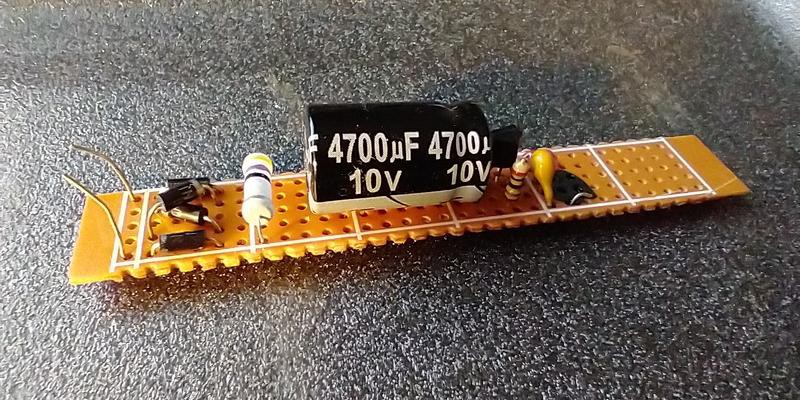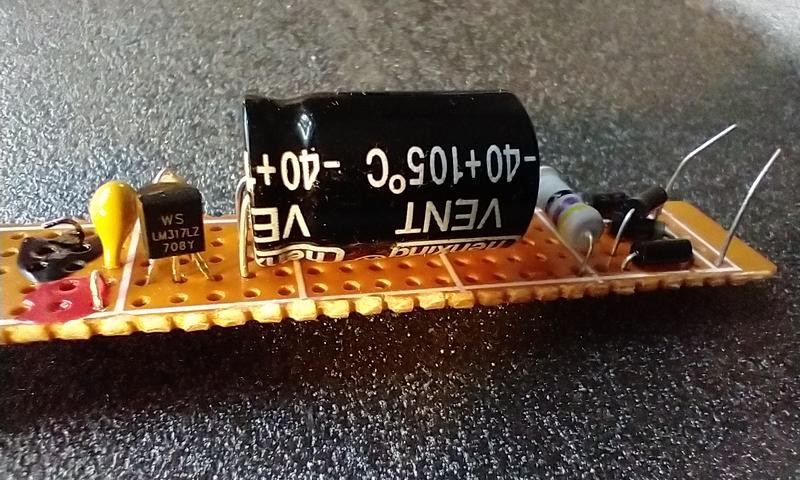The first VFD I'm playing with is a Futaba 20-SD-06GK, which has 59 pins and I can't find a datasheet for it! I measured resistance between pins and found that pins 1 and 2 are shorted together, and so are 58 and 59. The cold resistance between the pairs is 18 Ohms, about what you'd expect for the filament. In a dark room, I crank up the voltage over the filament until the incandescence makes it barely visible. That happened at 3.1 V (47 mA).
Like every other VFD I've seen, this one has a directly heated cathode, so the filament wire does double duty as the cathode. If you want to use a VFD for signal amplification, it is therefore necessary to apply very clean DC across the filament, or the mains hum will drown out any signal. I use low-power version of the LM317 voltage regulator (LM317LZ), because the datasheet claims it has better hum suppression (-80dB). I quickly build a little filament power supply on a piece of perfboard:

It rectifies AC from a tiny transformer using four 1N4001 diodes, drops the voltage a bit (to not overheat the voltage regulator) and then feeds a 4.7 mF cap, before regulation.

The regulator is configured as a 47 mA current source. The schematic is in the LM317LZ datasheet. Super simple and works well. It drops the hum from 300 mV peak-to-peak to less than 1 mV.
Discussions
Become a Hackaday.io Member
Create an account to leave a comment. Already have an account? Log In.